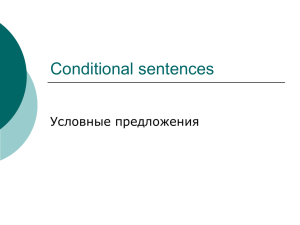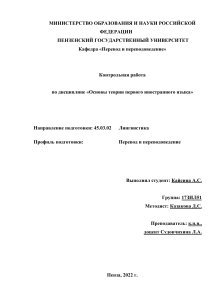
Postgres Execution Plan Guide A guide to the terminology commonly found in a Postgres Execution Plan, what they mean, and why they are used. Ben Brumm www.databasestar.com Postgres Execution Plan Guide Postgres Execution Plan Guide In this guide, you’re going to learn more about the Execution Plan in Postgres. This guide includes: ● how to view an Explain Plan or Execution Plan ● a list of many of the common access methods and join methods ● what the methods mean ● why the database would use each of these methods Understanding the terms in the Execution Plan is the first step in understand how your query is executed and what you can do to improve its performance. Let’s get right into it. www.DatabaseStar.com 1 Postgres Execution Plan Guide How to View an Execution Plan Here's how you can view an Execution Plan in Postgres using pgAdmin. If you use a different SQL editor, you'll likely see a similar button on the toolbar or in the menu. Click on Explain. You may want to click on Explain Settings and enable Cost first. Now, let's look at the details shown within the execution plan. Access Methods These steps are used by the database to access data from a table or an index. Name Definition When It Is Used Seq Scan Read every row in the table. It’s equivalent to a Full Table Scan and is the most expensive operation. No indexes on the table. Index Scan This operation traverses a B-tree index and finds matching rows, then gets the data from the table. It’s similar to an Index Range Scan and When an index exists and www.DatabaseStar.com 2 Postgres Execution Plan Guide Table Access By Index Rowid. Index Only Scan This operation traverses a B-tree index and finds matching rows. There is no table access. When all of the required data exists in the index Join Operations These steps are used by the database to combine two sets of results and return a single set of results. Name Definition When It Is Used Nested Loops Compares each row of one result with each row of another, and returns a single result Generally used for large data sets, or where one table is much larger than the other Hash Joins two sets of results in memory and returns a single result Generally used for small data sets or when the results can fit in memory Merge Join Compares two sets of results, each of which are sorted, and returns the combined result Used when the columns in the two result sets have indexes Sort Operations These steps are used by the database to sort a set of results for display or further processing. Name Definition When It Is Used Sort This operation will sort the data based on the specified column. When an Order By clause is used. GroupAggregate This operation aggregates data as mentioned in the GROUP BY clause. When a query has a Group By clause and an aggregate function. HashAggregate This operation will also aggregate data but uses a temporary hash table in memory. When a query has a Group By clause and an aggregate function. www.DatabaseStar.com 3



![Этап: 2. Сканирование [Scanning]](http://s1.studylib.ru/store/data/005027200_1-078be7b4757bbc5d820a2b3f8589def0-300x300.png)